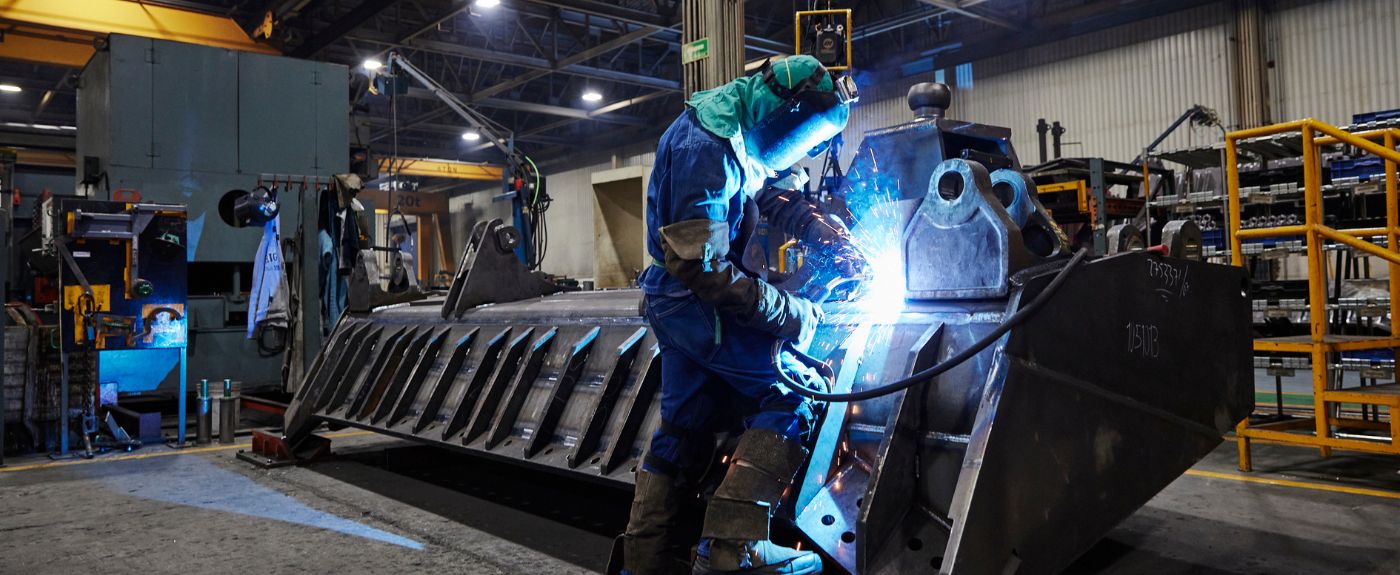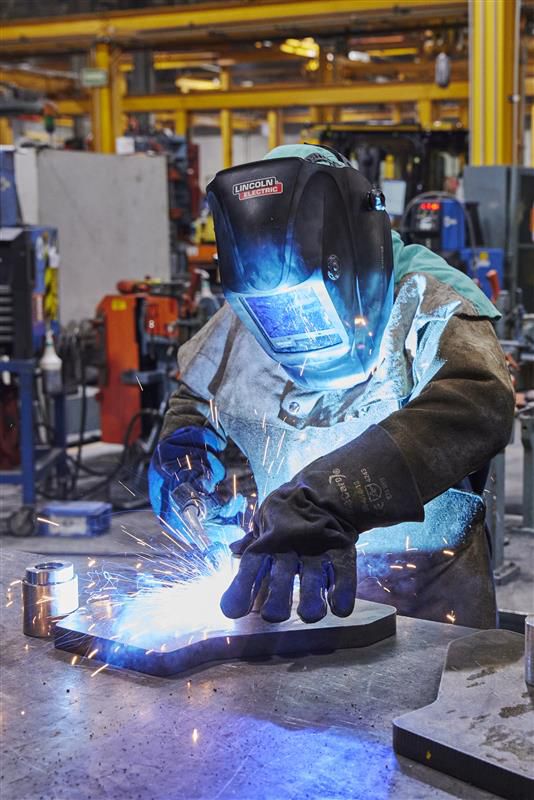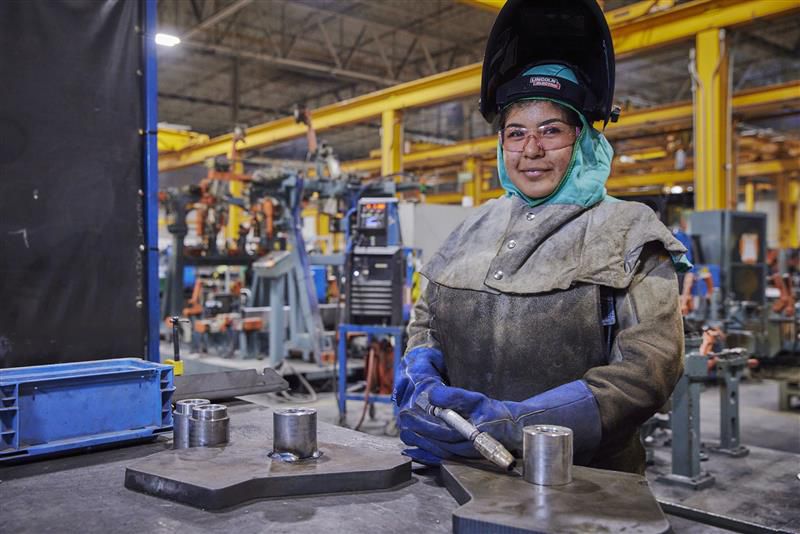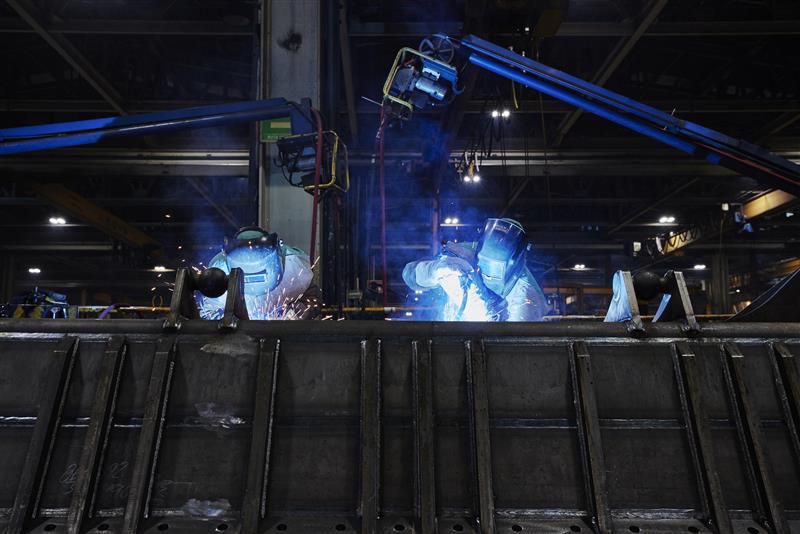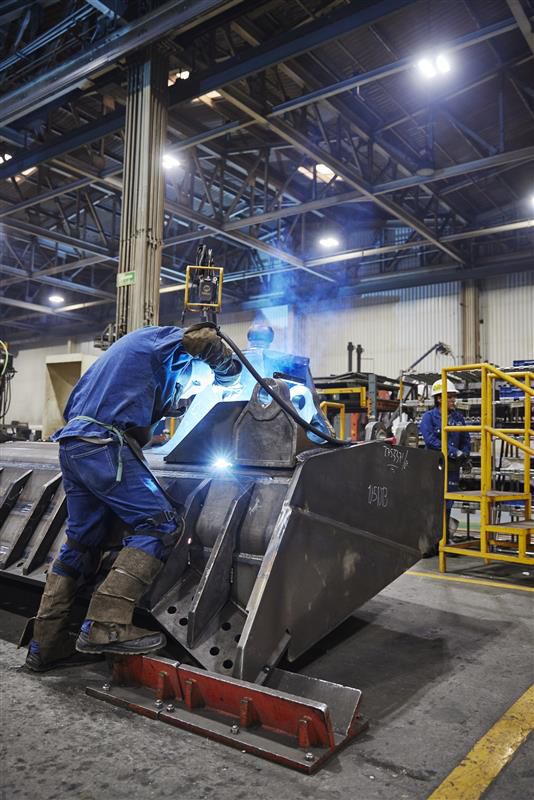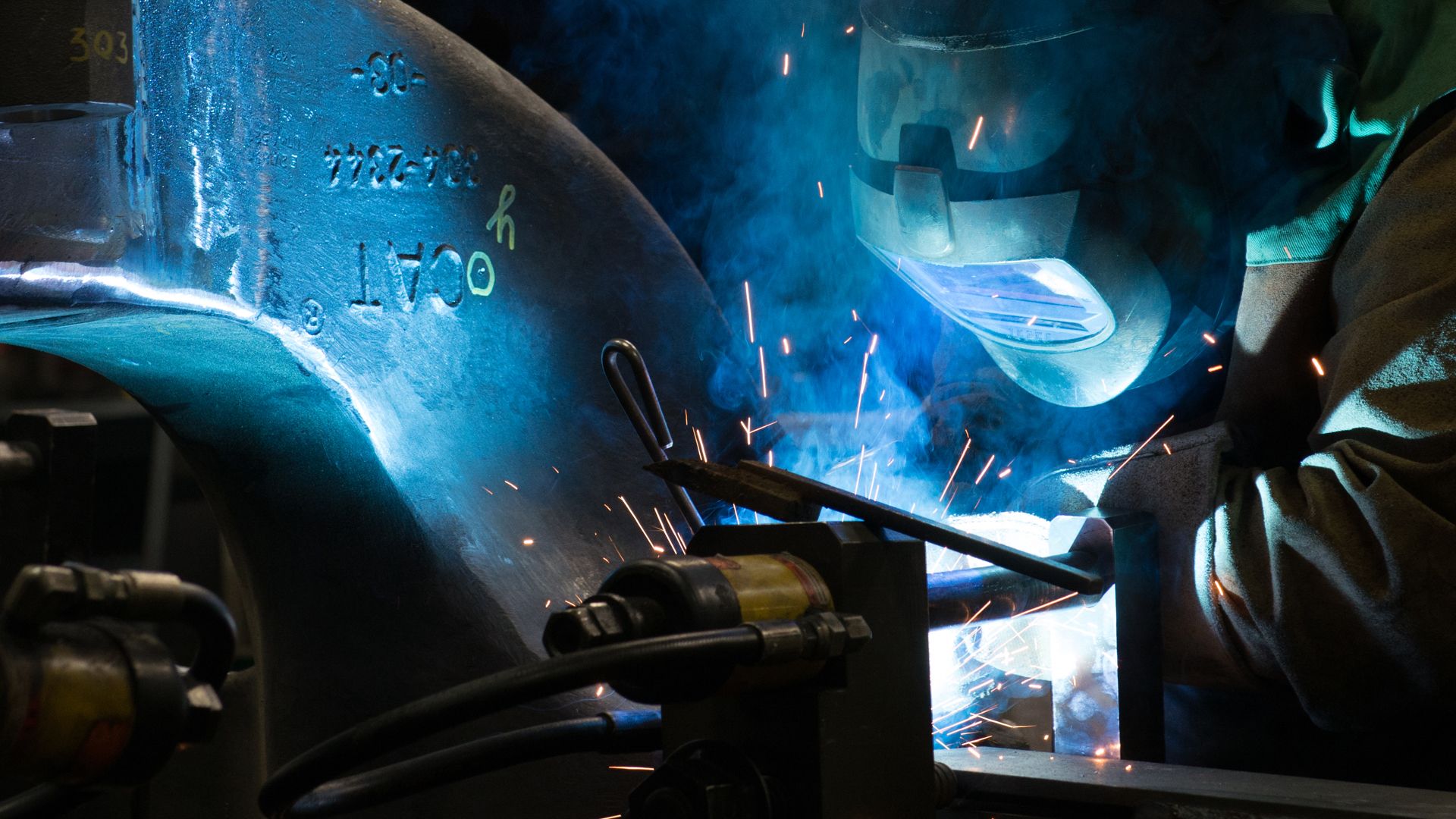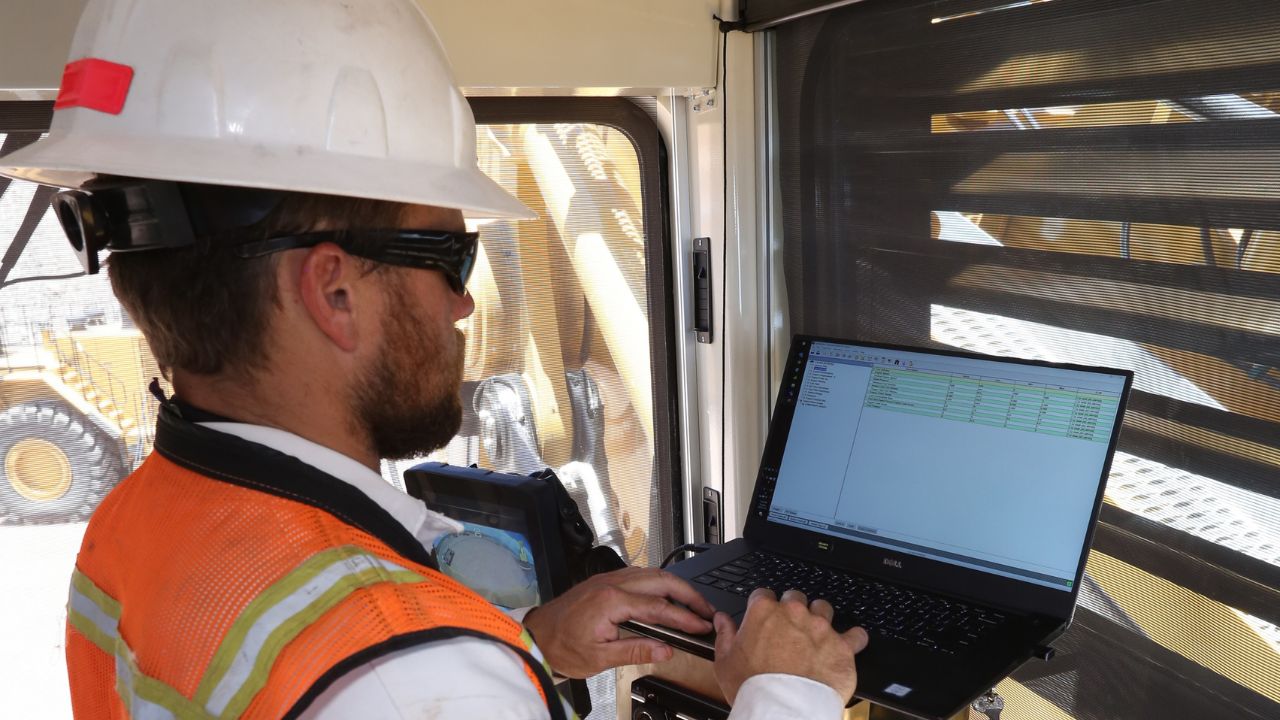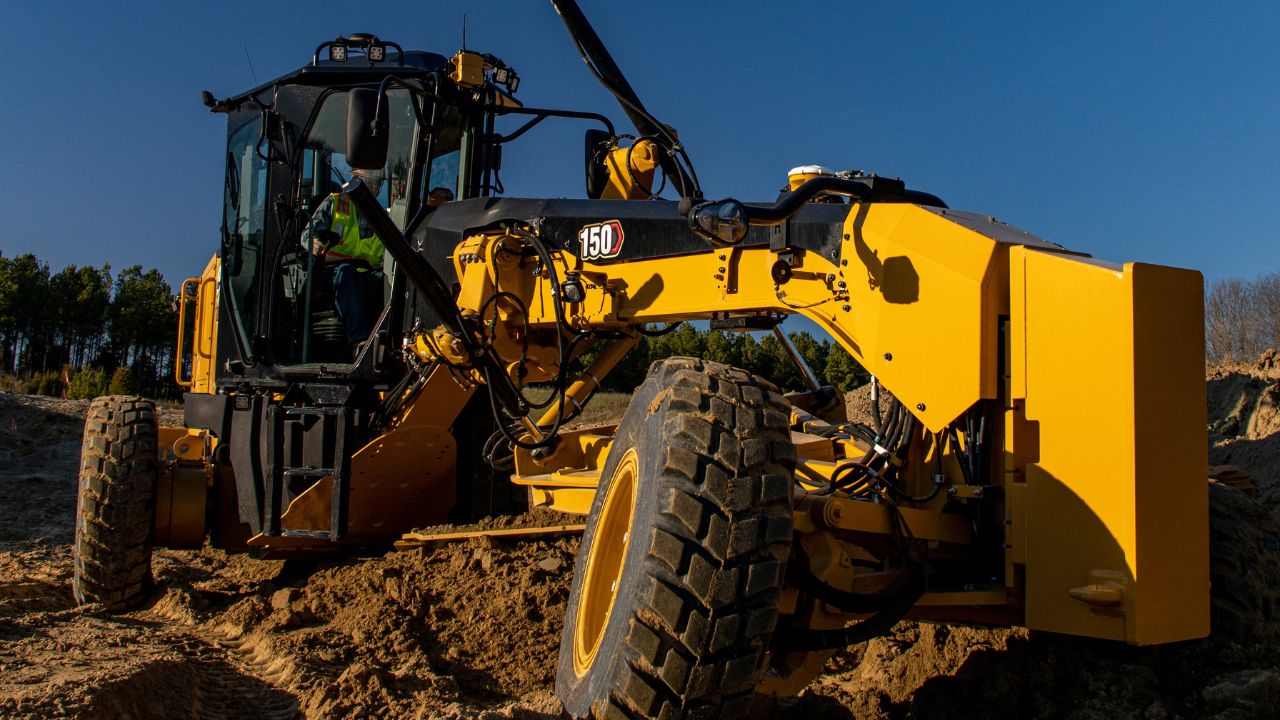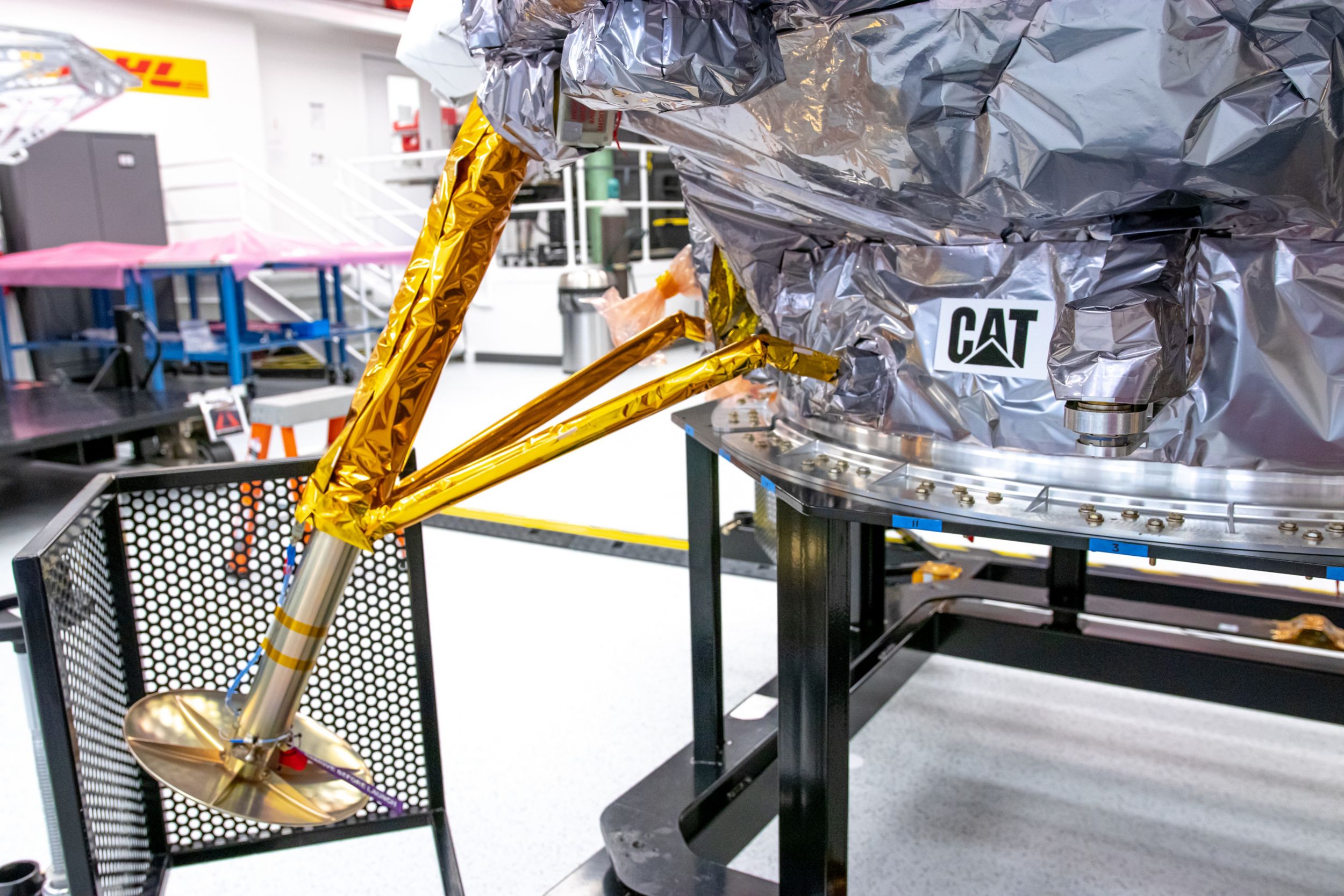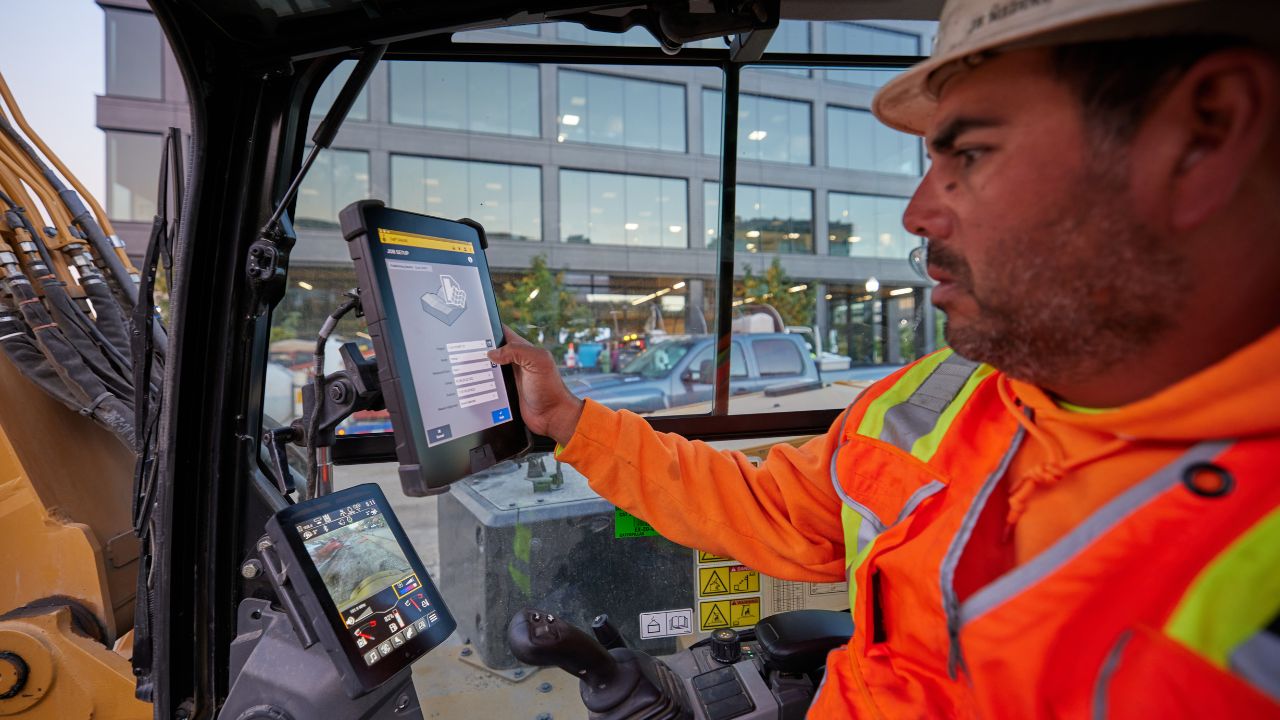

Sign In
Welcome! Sign In to personalize your Cat.com experience
If you already have an existing account with another Cat App, you can use the same account to sign in here
Register Now
One Account. All of Cat.
Your Caterpillar account is the single account you use to log in to select services and applications we offer. Shop for parts and machines online, manage your fleet, go mobile, and more.
Account Information
Site Settings
Security
Welds Worthy of the Work
Welding: It’s an ancient art form that remains the foundation of a well-made, long-lasting product. Here’s how our welders deliver quality that’s up to Caterpillar standards — and more important, yours.
Did you make a cup of coffee this morning? Travel somewhere in a car, truck, train or plane? Use a mobile phone? Sit in a desk chair? Thank a welder.
“All those products contain welded parts or require welded parts to manufacture,” says Don Stickel, a manufacturing engineering fellow who leads Caterpillar’s welding technical community. “The American Welding Society estimates that more than 50% of products made in the U.S. today require welding.”
That includes every Cat® machine, engine and generator set produced in the U.S. and around the globe. In fact, according to Stickel, Caterpillar is one of the world’s largest users of welding consumables.
Don Stickel
Caterpillar Manufacturing Engineering Fellow
Practiced for Millennia, Updated for Modern Times
A fabrication process for joining metals, welding dates back thousands of years, when people first started fusing bronze, copper, and iron together to make weapons, utensils, jewelry and other goods.
Forge welding became commonplace during the Middle Ages, with blacksmiths heating two pieces of metal to high temperatures and then hammering them together. The Industrial Revolution saw the birth of modern processes like arc and gas welding. Automatic welding, where an electrode wire is fed continuously through a welding machine, debuted in the 1920s.
Gas metal arc welding is the technique used for almost all Caterpillar welds, which are found in everything from machine frames and components to engines and battery enclosures. Also called metal inert gas (MIG) welding, the process creates an electric arc between a wire electrode and the metals to be welded, heating the metals so they melt and join.

For fatigue-bearing structures like those used in equipment and engines, welding is the preferred fusing method because it creates a permanent, high-strength joint — sometimes stronger than the metal itself.
“Welding provides the backbone for a machine,” Stickel says. “We put a lot of confidence on that welded structure, so it needs to be reliable. If a weld fails, the entire machine could go down.”
Weld Quality: More Than Skin Deep
Since quality welds are at the heart of every product, Caterpillar documents specifications for every weld — you’ll find them listed on more than 300,000 different engineering drawings. To ensure welds meet those criteria, they’re inspected at various stages of the manufacturing process.
“A good weld looks different to different people,” Stickel says. “That’s why we measure quality using weld gauges under the guidance of a qualified inspector.”
Cracks are never allowed, except in hard surfacing where cross-hatching is expected. Neither is the overlap of weld metal. Both can affect a product’s structural life, leading to premature failure. Excessive amounts of spatter and inconsistent profiles also indicate a potential problem.
That said, Stickel stresses that you can’t judge the quality of a weld on looks alone.
“You can only see the surface of a weld, but ours range anywhere from six millimeters to 100 millimeters thick,” he says. “So we use ultrasonics and X-rays to see what’s going on underneath the surface as well.”
Best team, best technology
Delivering consistent, quality welds is the job of Caterpillar’s 5,000-plus welders, who work at more than 90 facilities around the world. Hiring and developing top talent is a priority.
“Our welders aren’t just sticking two pieces of metal together,” Stickel says. “Their work impacts the life of our equipment.”

Excellent manual dexterity and strict attention to detail are two key qualities Caterpillar seeks in a welder. Once onboard, all welders must qualify in the processes they’ll use in production. At a minimum, they’re tested on fillet and groove welds in both flat and horizontal positions. Some facilities also require vertical and overhead flux-core welding tests.
Access to the latest tools and technology also gives Caterpillar welders an edge. Advanced wave forms, for example, help them produce a better result than traditional manual welding. New developments incorporating AI and machine learning can deliver a work assignment, compare a welder’s work to the planned method and then offer real-time feedback on the results.
“It’s like how Google Maps plots your route and then tells you to make a U-turn when you’ve missed a step,” Stickel says. “This technology can help us get the right information to the welder on the shop floor, shorten the learning curve and improve our first-time quality.”
Welders and Robots Unite
These days, more and more Caterpillar welders also find themselves working hand in hand with collaborative robots. Also known as “cobots,” these industrial robots can operate safely alongside people in a shared workspace.
“Instead of large, monolithic robotic welding systems that are inflexible and cost millions of dollars, we can bring these smaller robots into the work cells,” Stickel says. “They don’t replace humans — they’re tools operated by humans to handle some of the more repetitive tasks.”
That includes welds that require long arc times, demand lots of physical repositioning or contortion or take place in tight spaces. On one Cat mining truck, for example, a cobot and a welder working together can complete a weld to exacting specifications 60% faster than a person working alone.
“Cobots can make the job safer and less tiring, while allowing people to focus on the things they’re good at and build skills they didn’t have before,” Stickel says. “Our welders are some of their biggest fans, because the cobots help them produce welds they’re proud of.”

Despite the growth of automation, Stickel doesn’t see it ever replacing the need for human welders, especially given the large structure welding that takes place inside Caterpillar facilities.
“We’re dealing with high levels of variation because of the scale of our products,” he says. “A person can adapt to that. A robot cannot. We still need people do the work that requires calculations and thinking.”
In-Demand, High-Potential Career
If anything, the need for human beings is growing. The American Welding Society predicts a shortage of about 360,000 welders by 2027, and that’s just in the U.S.
“Automation can help fill the gap, not by replacing jobs but by helping existing welders operate more efficiently,” Stickel says. “It might also make the field more appealing to new welders.”
That’s important because welding sometimes is viewed as dirty, dangerous work. Stickel says it’s anything but that at Caterpillar.

“Our factories are clean and bright and safe, and most welders are wearing hoods with filters, so they’re breathing cleaner air than we are sitting in our living rooms,” he says. “We also work with the best companies to advance welding tools and technologies. It’s nothing like it used to be.”
Welding is also a career with growth potential. Stickel is a case in point.
An Ohio State University graduate with a degree in welding engineering, he started at Caterpillar as a welding technician, writing welding procedures and supporting manufacturing for mining trucks.
Three decades later, he manages all welding-related specifications and standards and provides technical guidance to all product groups and facilities worldwide. He also sits on committees for the American Welding Society, International Institute of Welding and National Institute of Standards and Technology.
Don Stickel
A Welder’s Dream
Thirty years into his career at Caterpillar, Stickel is most proud of the company’s legacy of innovation in what some might view as an old-school craft.
“We had the first U.S. patent in the 1960s for inertia welding, which was a game-changer for the industry,” Stickel says. “I have 11 patents, but many of my peers have way more. Caterpillar cares about welding and invests in R&D related to it. This is a dream destination for a welding engineer like me.”
Related Stories
-
Remote Services
Remote Services is a technology suite that improves jobsite efficiency by enabling diagnostic testing and remote updates to connected machines.
Learn More -
Caterpillar Equipment Model Name & Number Basics
Learn the meaning behind Caterpillar equipment model names, including their history, what the model numbers & letters mean and how new products are named.
Learn More -
Caterpillar Technology Enables Out of This World Solutions
Learn how Caterpillar’s efforts in autonomous technology, robotics and soil simulation are helping NASA with excavation & construction projects on the moon.
Learn More Technology -
Caterpillar and AI: Three Ways Smart Technology Makes Work Easier
Learn how Caterpillar utilizes AI within our technology product offerings, including applications in fleet management, equipment maintenance and parts.
Learn More Technology
